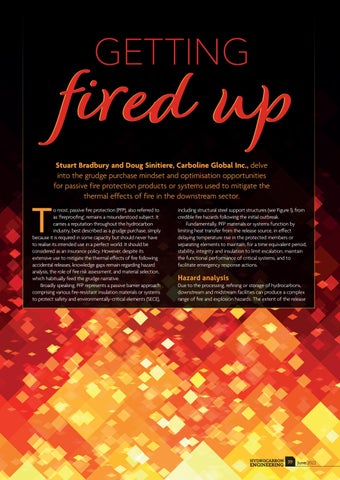T
Stuart Bradbury and Doug Sinitiere, Carboline Global Inc., delve into the grudge purchase mindset and optimisation opportunities for passive fire protection products or systems used to mitigate the thermal effects of fire in the downstream sector.
o most, passive fire protection (PFP), also referred to as ‘fireproofing’, remains a misunderstood subject. It carries a reputation throughout the hydrocarbon industry, best described as a grudge purchase, simply because it is required in some capacity but should never have to realise its intended use in a perfect world. It should be considered as an insurance policy. However, despite its extensive use to mitigate the thermal effects of fire following accidental releases, knowledge gaps remain regarding hazard analysis, the role of fire risk assessment, and material selection, which habitually feed the grudge narrative. Broadly speaking, PFP represents a passive barrier approach comprising various fire-resistant insulation materials or systems to protect safety and environmentally-critical elements (SECE),
including structural steel support structures (see Figure 1), from credible fire hazards following the initial outbreak. Fundamentally, PFP materials or systems function by limiting heat transfer from the release source, in effect delaying temperature rise in the protected members or separating elements to maintain, for a time equivalent period, stability, integrity and insulation to limit escalation, maintain the functional performance of critical systems, and to facilitate emergency response actions.
Hazard analysis Due to the processing, refining or storage of hydrocarbons, downstream and midstream facilities can produce a complex range of fire and explosion hazards. The extent of the release
HYDROCARBON 39
ENGINEERING
June 2022













